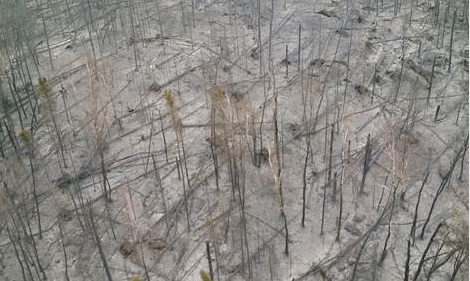THUNDER BAY — A number of prescribed burns are planned across the Northwest Region this fall and into spring 2026.
The Ministry of Natural Resources and Forestry’s Aviation, Forest Fire and Emergency Services says the controlled burns will reduce wildfire risks while promoting healthier forests in the wake of this year’s fire season.
“Prescribed burns are carefully planned operations, conducted to minimize the chance of wildland fires,” Alison Bezubiak, Northwest Region fire information officer for the ministry, wrote in an email.
Several locations have been identified for burning, including Nelson Lake in the Thunder Bay District.
A 122-hectare silviculture burn will prepare the site for planting red and jack pine by clearing blowdown debris and natural disturbances. The burn will also reduce the risk and intensity of future wildfires.
“The prescribed burn will help remove any debris left behind from these disturbances and as a by-product, lower the risk and intensity of any possible new wildland fire for a certain amount of time,” Bezubiak added.
Fort William First Nation, also in the Thunder Bay District is on the list of prescribed burns.
Now in its eighth year, this hazard reduction project removes dried grasses that could fuel a fire. Ministry crews will use hand ignition across small plots, supported by fire engines and community members. The weather prevented the burn last spring, it is expected to resume in 2026 if conditions are favourable.
For Mishkeegogamaang Independent First Nation in the Sioux Lookout District, a hazard reduction burn may take place this fall, with a confirmed prescription for spring 2026. Trained community members will work alongside ministry staff to manage the operation.
Community-led burns were completed this spring in Wabaseemoong Independent First Nation in the Kenora District and additional work is planned as part of a long-term partnership with the ministry to reduce dry grass buildup around homes and infrastructure.
Hooker Lake in St. Raphael Provincial Park in the Sioux Lookout District will see an ecological burn that will reintroduce fire to Ontario’s most northern stand of red pine. The goal is to reduce competing balsam fir in the understory, lowering wildfire risk and supporting the health of this rare forest.
Prescribed burning also plays a broader role in ecosystem health. It can clear land for reforestation, reduce undergrowth to allow sunlight to reach the forest floor, control pests and disease, and return nutrients to the soil. The process also enhances wildlife habitat, creating nesting sites for birds and shelter for small mammals.
Bezubiak emphasized that these operations are safe and carefully controlled.
